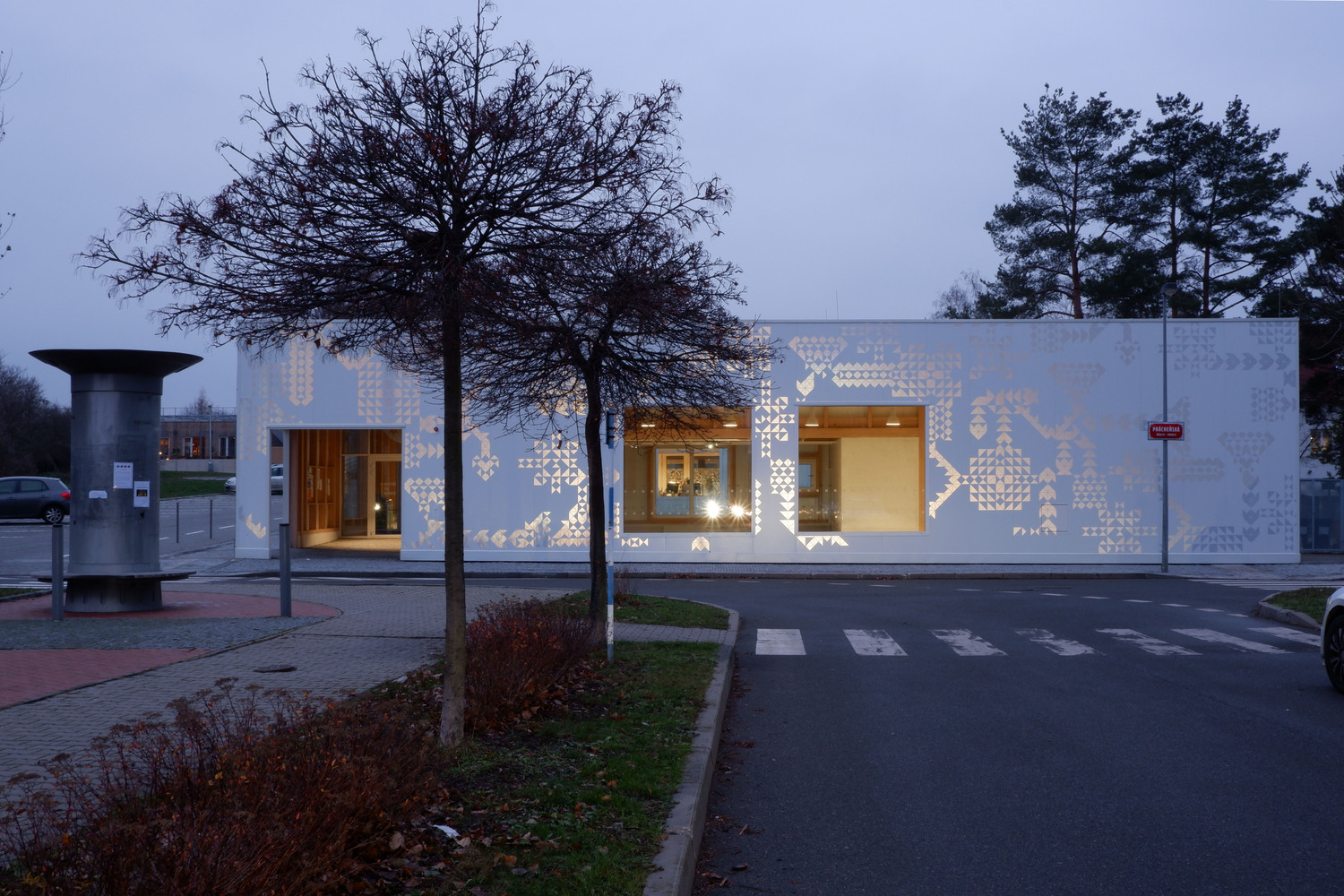Jacobsvlinder School DKV architecten
2013-04-03 01:00
架构师提供的文本描述。德·雅各布斯文德(Cinnabar Moth)学校,原名普林·伯恩哈德学校(Prins Bernhard School),是重建帕伦斯坦社区的一部分。帕伦斯坦社区位于市中心附近,是佐特米尔的四分之一,建于20世纪60年代。在建筑方面,新学校建筑形成了目前在建的纽欧-舒滕霍克住宅综合体的城市性与直接毗邻该位置的独立房屋的现有乡村核心的小规模特征之间的联系。
Text description provided by the architects. De Jacobsvlinder (Cinnabar Moth) School, previously known as the Prins Bernhard School, is a part of the restructuring of the Palenstein neighbourhood, a quarter of Zoetermeer near the centre, built in the nineteen-sixties. In architectural respect, the new school building forms the link between the urbanity of the Nieuw-Schoutenhoek housing complex currently under construction, and the small-scale character of the existing village cores of detached houses that directly adjoin the location.
学校以适应性教育的形式提供初级教育,目的是在“刺激和审美”的环境中教育学生,这些学生往往来自贫困家庭。
The school provides primary instruction in the form of Adaptive Education, and has the aim of teaching pupils, who often come from underprivileged families, in a ‘stimulating and aesthetic’ environment.
紧凑型的两层教室包括围绕着学校中心的九个教室:一个轻盈的、中央的、大尺寸的大厅。由于这种清晰的空间设置,纯循环的范围可以保持在最小,而可用的公共空间是最大程度的多功能。大楼梯,完全覆盖木材,不仅是一个点的海拔,但也是一个公共论坛的看法,发挥地区,因此也可以作为一个剧院舞台。
The compact two-level volume contains nine classrooms organized around the heart of the school: a light, central, large-dimensioned hall. As a result of this clear spatial set-up, the scope for pure circulation can be kept to a minimum, while the available communal space is multifunctional to a maximum degree. The large stairway, completely clad with wood, is not only a point of elevation but also a public tribune with a view of the play area that can therefore also serve as a theatre stage.
考虑到学校的中心情况和特殊的教育视野,环境的氛围和与环境的互动成为设计的出发点。在各种不同的建筑之间形成鲜明对比的形式,颜色和材料,该方案是设计成一个简单的矩形体积与大窗户的图案。立面材料是多组分砖,砖块的大小不同,从而产生了触觉的诱惑力。一块巨大的玻璃切割在砖瓦卷打开了所有的活动在引人注目的绿色中央大厅向外界开放。此外,大厅里有两个非凡的元素吸引了学生的注意力,激发了学生们的想象力:作为梯形木制家具建造的大楼梯和角上的椭圆形体积,在那里可以看到加泰罗尼亚-日本艺术家Isao的真人大小的马赛克,这是他祖父陶艺家洛伦斯·阿提加斯(Llorens Artigas)制作的马赛克的传统。与和平号一起。玻璃上的元素和屋顶上的元素增加了Isao艺术作品的魔力。
Taking into account the central situation and the exceptional educational vision of the school, the ambience of, and the interaction with, the environment became the starting points of the design. Between all the various buildings that contrast in form, colour and material, the programme was designed as a simple rectangular volume with a pattern of large windows. The façade material is polymetric brickwork, with bricks of various sizes so that a tactile allure is generated. A large glass cut-out in the brickwork volume opens up all the activities in the strikingly green central hall to the outside world. In addition, two extraordinary elements in the hall attract much attention and fire the imagination of the pupils: the large staircase that has been built as a trapezium-shaped wooden item of furniture, and the oval volume at the corner on which a life-sized mosaic by the Catalonian-Japanese artist ISAO is visible, in the tradition of the mosaics made by his grandfather, ceramist Llorens Artigas, in conjunction with Miró. Elements on the glass and on the roof increase the magic of ISAO’s artwork.
德·雅各布斯文德是一所特殊的可持续发展学校。该建筑的GPR(全球产品战略)的平均评级为9或更高。一方面,学校是以实心的、免维护的材料建造的,由于其柱的结构具有很大的空间和功能的可变性。另一方面,该建筑将舒适健康的室内气候和低能耗结合在一起,其基础是地热能热泵装置、地下采暖、绿色屋顶和二氧化碳调节通风。
De Jacobsvlinder is an exceptional sustainable school. The building has a GPR (Global Product Strategy) rating of 9 or higher on average. On the one hand, the school has been constructed from solid and maintenance-free materials and has a large degree of spatial and functional changeability due to its column structure. On the other hand, the building combines a comfortable and healthy indoor climate with low energy use, based on a geothermal heat pump installation with underfloor heating, a green roof, and CO2-regulated ventilation.
 举报
举报
别默默的看了,快登录帮我评论一下吧!:)
注册
登录
更多评论
相关文章
-

描边风设计中,最容易犯的8种问题分析
2018年走过了四分之一,LOGO设计趋势也清晰了LOGO设计
-

描边风设计中,最容易犯的8种问题分析
2018年走过了四分之一,LOGO设计趋势也清晰了LOGO设计
-

描边风设计中,最容易犯的8种问题分析
2018年走过了四分之一,LOGO设计趋势也清晰了LOGO设计












































































